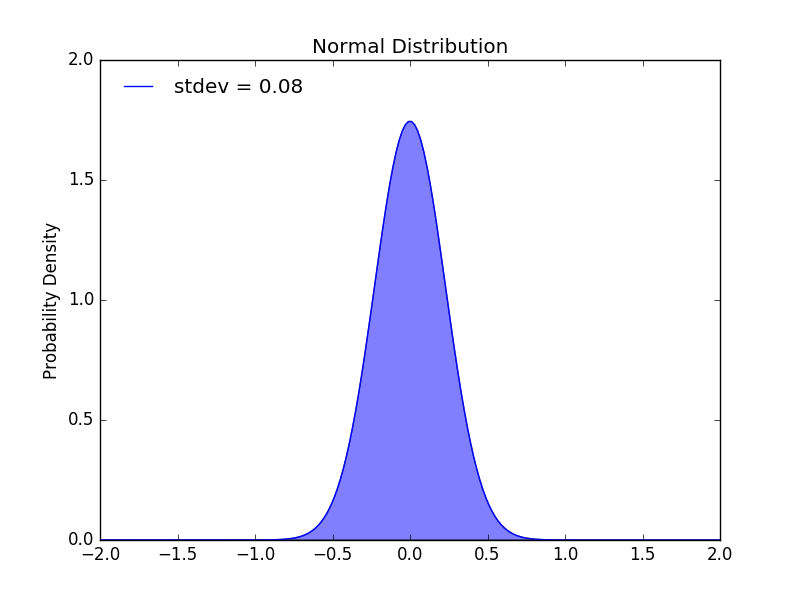Galvanize Data Science: Week 2
06 Jun 2016Today, the high in Seattle hit 92°F. It’s very hot in my apartment, I feel like a normal distribution with an increasing standard deviation…
 Animated normal distribution with a changing standard deviation. Made with matplotlib and imageMagick.
Animated normal distribution with a changing standard deviation. Made with matplotlib and imageMagick.
Before entering the Data Science Intensive Program at Galvanize, I reached out to current and previous cohort members to see if they had any thoughts or advice for someone thinking to enter. Nearly every person came back with a glowing review and the same analogy:
> > "...it's like trying to drink from a firehose." > >
They weren’t joking. There is so much information being thrown at us at one time that it is physically impossible to absorb it all. The best you can do is take good notes and try to take in as much as you can.
In this week we covered an incredible amount of material. We covered (no joke) about a year’s worth of lectures on probability, statistics (frequentist and bayesian), A/B testing, hypothesis testing, and bootstrapping all in one week. Because of memorial day, all of that was crammed into four days. Needless to say, I’m exhausted, but satisfied.
Each day’s lectures were complimented with programming exercises illustrating the topics of the day. For the A/B testing exercise for example, we used data from Etsy to determine if changing their homepage would drive additional customer conversion. For the Bayesian lecture, we developed and performed simulations for coin flips and die rolls to illustrate the concepts behind Bayesian probability. This topic was somewhat mind-blowing to me, as Bayesian probability is a way of thinking about statistics which is totally different and foreign to the ways that most people (including myself) are taught.
This was also the second week of pair-programming and I’m finding I like it more and more. Pair-programming is when one person “drives” while the other person “worries”. You switch off every 30 minutes or so. The brilliance of pair-programming is that, in addition to learning to work with other people, by the end of the day, we are often very tired and having a partner helps. Working in groups makes you answerable to your partner. Your mutual success depends on both of you working hard to get the assignment done. We switch partners daily, so each day has a different dynamic. Sometimes I’m the stronger programmer, sometimes I’m not. I’ve found it’s a nice way of humbling oneself.
Thanks for reading.
Next week: It’s Linear and Logistic Regression, sounds fun huh?